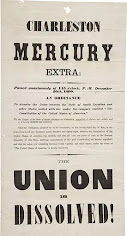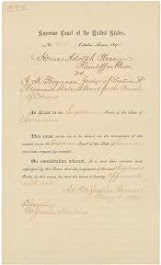The secession of South Carolina from the United States on December 20, 1860, marked a critical turning point in American history, setting the stage for the Civil War. This event was not only the first formal act of secession by a Southern state but also a catalyst for the broader secessionist movement that swept across the South in the months following. South Carolina's secession is significant for various reasons, including its deep roots in political, social, and economic conflicts that had been simmering for decades between the North and South, most notably over the issues of slavery, states' rights, and sectional power.
By the mid-19th century, the United States was becoming increasingly polarized. The North, with its growing industrial economy, was diverging sharply from the South, which remained predominantly agrarian and dependent on slavery. The abolitionist movement gained momentum in the North, advocating for the end of slavery, while the South saw slavery as essential to its economy and way of life. The state’s economy having been heavily reliant on enslaved labor, particularly within the cotton industry, saw any threat to the institution of slavery as a threat to their economic survival and social structure. This fear was exacerbated by the election of 
Abraham Lincoln as President in November 1860. Lincoln was a Republican, and although he had not campaigned on a platform of immediate abolition, the South feared that his administration would eventually move to restrict and ultimately abolish slavery. For many in South Carolina, Lincoln's election was the final straw.
Following Lincoln’s election, South Carolina wasted little time moving toward secession.  On December 20, 1860, a special convention was held in Charleston where delegates voted unanimously in favor of secession. The convention drafted the "Declaration of the Immediate Causes Which Induce and Justify the Secession of South Carolina from the Federal Union," which laid out the state’s reasons for seceding. The document explicitly linked South Carolina’s decision to the issue of slavery, arguing that the non-slaveholding states had "denounced as sinful the institution of slavery" and had refused to uphold the Constitution by allowing the return of fugitive slaves, as required by the Fugitive Slave Act. The declaration framed secession as a necessary defense of both states' rights and the institution of slavery.
On December 20, 1860, a special convention was held in Charleston where delegates voted unanimously in favor of secession. The convention drafted the "Declaration of the Immediate Causes Which Induce and Justify the Secession of South Carolina from the Federal Union," which laid out the state’s reasons for seceding. The document explicitly linked South Carolina’s decision to the issue of slavery, arguing that the non-slaveholding states had "denounced as sinful the institution of slavery" and had refused to uphold the Constitution by allowing the return of fugitive slaves, as required by the Fugitive Slave Act. The declaration framed secession as a necessary defense of both states' rights and the institution of slavery.
South Carolina’s secession was more than just a reaction to Lincoln’s election; it was a response to long-standing grievances. The state had a long history of advocating for states’ rights and nullification, having previously threatened to secede during the Nullification Crisis of 1832-33 when President Andrew Jackson sought to enforce federal tariff laws that South Carolina opposed.
of 1832-33 when President Andrew Jackson sought to enforce federal tariff laws that South Carolina opposed.
The secession was significant as it triggered a wave of secession by other Southern states, leading to the formation of the Confederate States of America in early 1861. Over the next few months, Mississippi, Florida, Alabama, Georgia, Louisiana, and Texas all followed South Carolina’s lead, seceding from the Union. The secessionists argued that the Union was a voluntary compact among sovereign states and that they had the right to withdraw from it if the federal government violated their rights. The federal government, along with the backing of the Northern States, viewed these acts as unconstitutional. This fundamental disagreement over the nature of the Union was an underlying cause that would only be resolved after the Civil War.
No matter how the secession of South Carolina is examined, it was a pivotal event that led directly to the Civil War. It reflected deep-seated divisions within the United States over slavery, states' rights, and the nature of the Union. As the first state to secede, South Carolina set the stage for a broader Southern rebellion and ultimately the most destructive conflict in American history.
 The resistance used violence with riots and oppressive laws, known as the Black Codes, as they wanted to control Black labor and maintain white supremacy. The creation of the Ku Klux Klan sought to reclaim their lives and social order before the Civil War, as they acted like Slave Patrols. The backlash revealed the deep-seated racism that still remained within the nation despite the end of slavery and the promises from the government for citizenship and rights for Black Americans.
The resistance used violence with riots and oppressive laws, known as the Black Codes, as they wanted to control Black labor and maintain white supremacy. The creation of the Ku Klux Klan sought to reclaim their lives and social order before the Civil War, as they acted like Slave Patrols. The backlash revealed the deep-seated racism that still remained within the nation despite the end of slavery and the promises from the government for citizenship and rights for Black Americans. 



















